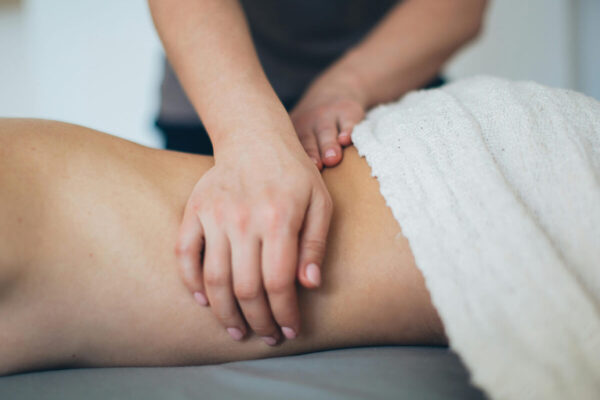How Chiropractic Rehabilitation Helps Treat Scoliosis
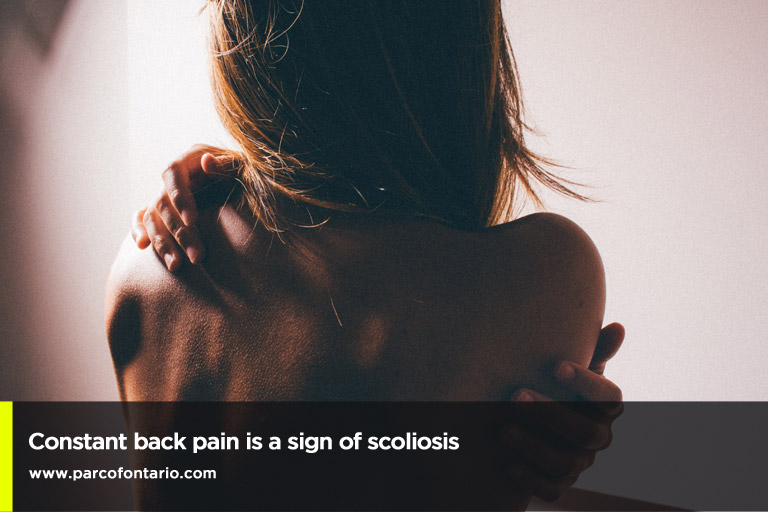
Most of us know that our spinal column contains and supports some of the most important bones in our bodies. The vertebrae in our spine keep us walking straight and tall. However, the spine can also be the source of challenges for a person living with scoliosis. Chiropractic rehabilitation can help scoliosis patients.
Care for Scoliosis
A healthcare professional (such as a general physician or chiropractor) can assess whether a person has scoliosis. Although it presents itself in children, the condition can develop in adults and older patients. There are three main components to scoliosis care: assessment, diagnosis, and treatment.
Assessment – To establish if a patient has scoliosis, screening is done to determine the severity of the condition. This is a non-invasive physical exam and can take only a few minutes. A chiropractor or other healthcare professional checks for any signs of uneven posture on the patient’s body or irregular curves in the spine.
Diagnosis – When scoliosis is suspected, ongoing monitoring and treatment will be discussed. Frequent examinations are important in scoliosis care to determine progress and make changes to the treatment program.
Treatment – Maximizing mobility and function is the primary goal of scoliosis treatment. The abnormal curves on a person’s spine can cause stress on weight-bearing joints, causing pain not just on the spine but throughout the patient’s body. Some treatment options include exercise, bracing, and chiropractic adjustments. In severe cases, correcting the curve will require surgery.
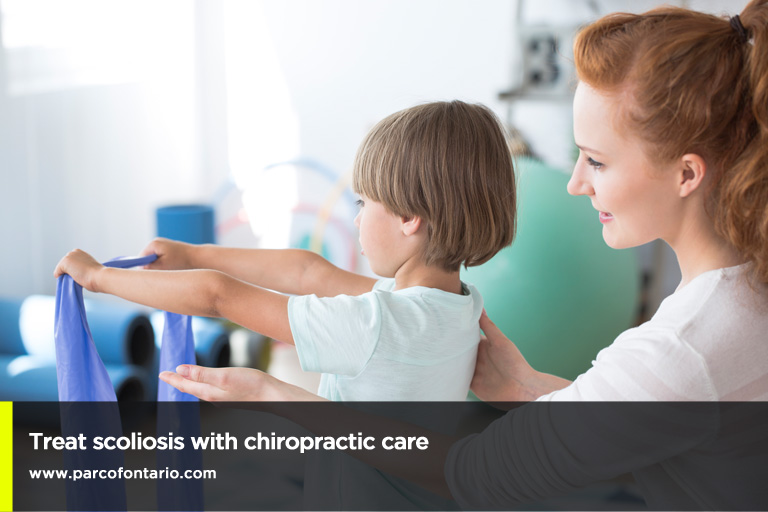
Scoliosis and Chiropractic Treatment
Chiropractic treatment is safe and effective for many scoliosis patients. Dr. Brian Gushaty (Registrar of the Alberta College and Association of Chiropractors) says:
“With their educational background, chiropractors are especially well-equipped to work with individuals with scoliosis. They can assess and safely treat people with scoliosis. They can also monitor scoliosis, order X-rays, and refer patients directly to a medical specialist when necessary.”
Chiropractors spend years studying how to assess, diagnose, treat, and prevent problems of the spine and musculoskeletal system which involves the joints, ligaments, tendons, muscles, and nerves. Their educational background makes them ideal healthcare providers for managing conditions affecting the spine.
There are different ways chiropractors can provide support to patients, from alleviating pain to lifestyle counselling and restoring levels of mobility. Here are three specific ways chiropractors can help people with various back problems:
- Expertise in monitoring scoliosis
There are some cases where scoliosis can worsen and pose additional challenges to a patient’s quality of life. Among adolescents, it is important to track the progression of scoliosis. A chiropractor is more than qualified for this responsibility. A teenager’s body is still growing, meaning there is a chance their scoliosis pain may be severe during growth spurts.
- Treatment for functional support
Other conditions may develop, related to scoliosis. Chiropractic doesn’t solely address treatment of the spine. It can alleviate pain in the hips resulting from uneven posture. Chriopractic treatment supports the function of all joints, particularly weight bearing ones.
- Referral to medical specialists if needed
Chiropractors regularly work with other doctors to maximize the physical benefit to a patient. If someone requires specialized care or their condition is worsening, a referral may be made to provide additional support and treatment for the scoliosis.
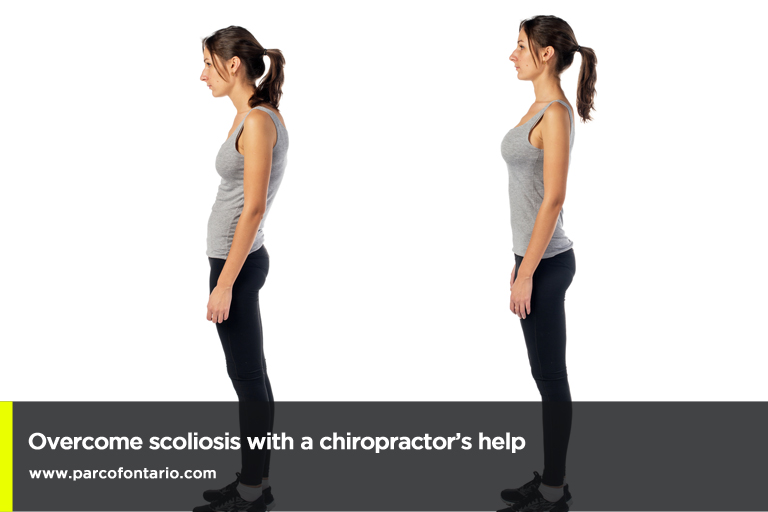
Chiropractic Care
Patients with scoliosis must inform the chiropractor of their condition at the initial assessment. If they received prior treatment, this information is also vital. In most cases, adjustments are not much different from those other patients receive. However, special consideration is given to the weight-bearing joints.
The chiropractor is better able to treat a patient with scoliosis efficiently and effectively if the condition has been diagnosed previously. In addition, patients who received corrective surgery and implants in their spine will have treatment customized to suit their individual needs.
Questions to Ask
Ask your chiropractor his/her approach for treating scoliosis. Inquire if they’ve made referrals for other specialized care and treatment. Asking questions will help you understand the type of treatment available and provide a strong understanding of how they address scoliosis management.
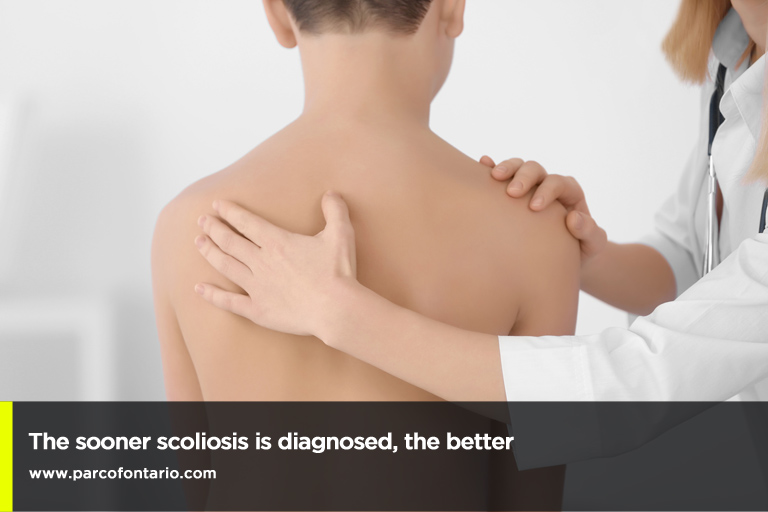
Early Detection of Scoliosis
It is imperative to treat this condition as soon as possible. Children with scoliosis may experience worsening of the curvature during adolescence because this is the time of rapid growth. Toronto’s Dr. Reinhard Zeller (head of orthopedic spine service at the Hospital for Sick Children) says the sooner scoliosis is detected, the better the likelihood of correcting the condition with a brace, avoiding surgery.
Scoliosis presents these physical signs:
- Uneven shoulders, waist, or hips
- Head appearing misaligned over the pelvis
- Unable to stand straight / leaning to one side
- One shoulder blade more prominent than the other
- In females, spine rotation can cause one breast to appear more prominent

What is Scoliosis?
Scoliosis affects one in every 25 people. Although it is relatively common across world populations, many patients have yet to discover the benefits of chiropractic care.
Scoliosis is a medical condition involving curvature of the spine. Most cases are mild, but there are severe conditions which require surgery to prevent it from getting worse. Depending on the misalignment of the spine, symptoms can include pain, difficulty breathing, uneven posture, reduced flexibility, and organ damage.
One symptom of the condition is that shoulders appear uneven, even as a person attempts to “stand up straight.” In these cases an X-ray image may reveal an S or C-shaped curve on the spine. Those with severe scoliosis can have a rotated spine which is caused by vertebrae that have been twisted alone the spine’s axis. Others may have a rotated trunk or a leg that is shorter than the other.
Poor posture is not the cause of scoliosis. The exact cause of the curvature is unknown in 85 percent of cases. It can be inherited or caused by spina bifida (incomplete development of the spinal cord). Other possible causes are:
- Marfan disorder – a disorder that affects connective tissue
- Cerebral palsy – brain damage can affect muscle coordination and body movement
- Neuromuscular disorder – weakens skeletal muscles
- Neurofibromatosis – a type of condition that allows tumours to grow on nerve tissue
The condition is more common among girls than boys, particularly between the ages of 10 and 12. However, boys present more serious cases. This type of condition is called “adolescent idiopathic scoliosis.” Babies can also be afflicted with “infantile scoliosis.” People who are over the age of 50 may develop the condition as a result of disc degeneration.
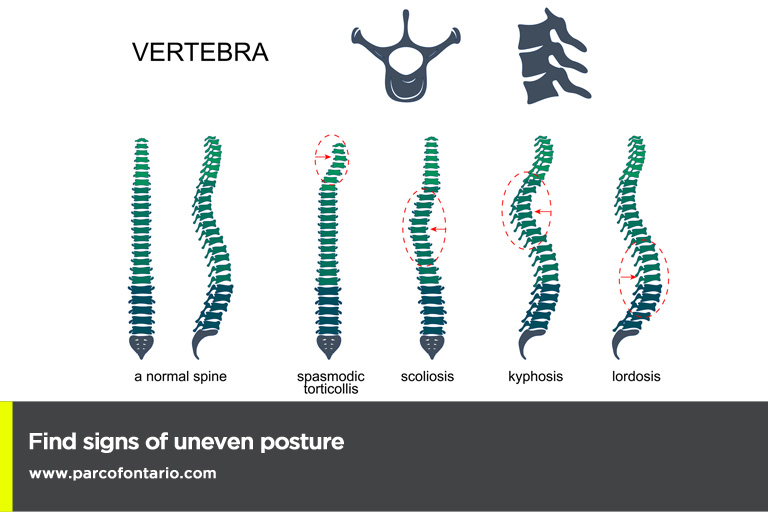
Recommendations by the chiropractor should include appointments for re-evaluation. Such visits are necessary because they help the doctor track whether the spine’s condition is improving. It also helps establish whether the patient is gaining function and mobility and is better able to perform more challenging daily tasks.
If you need a reliable chiropractor in the GTA, call PARC of Ontario. We have six locations, including Ajax and Oshawa. We have been providing service to clients for more than 20 years. Call (905) 579-9938 (Oshawa) or (416) 445-2075 (Scarborough), or check our home page for additional contact information.
